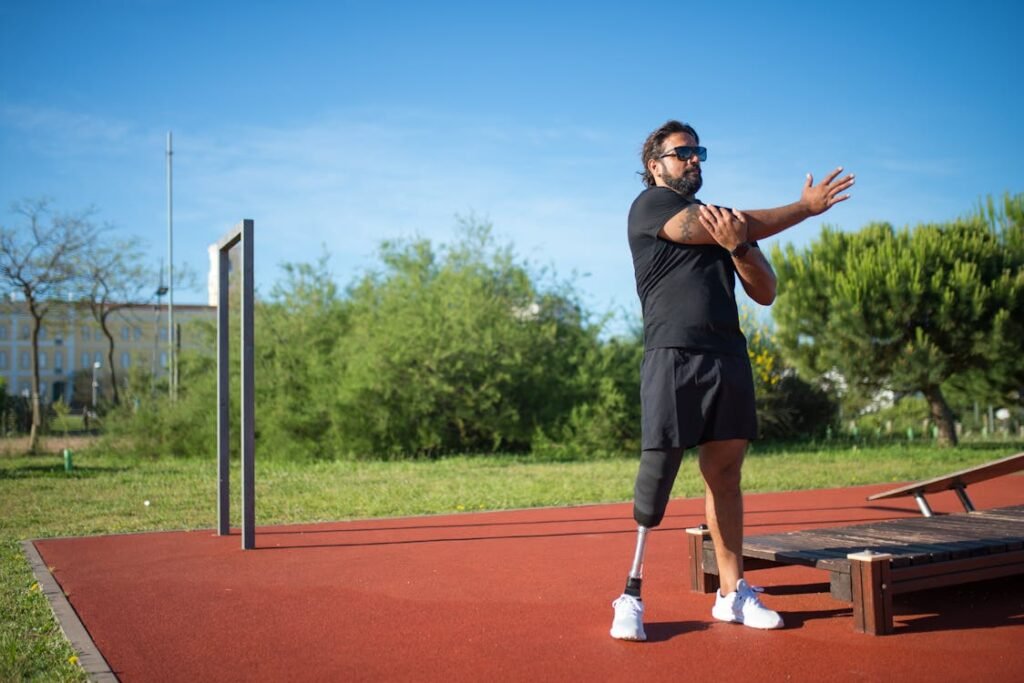Wearing a prosthetic should help you feel stronger, not more tired. It should support your life, not slow it down. Yet many people who wear prosthetics struggle with one key issue every single day—comfort. More often than not, that discomfort doesn’t come from the device as a whole, but from the socket. The socket is the part that connects your body to the prosthetic. It wraps around your limb and carries your weight, your movement, and your energy. If that connection isn’t right, everything else becomes harder.
That’s why socket design matters so much. A well-designed socket feels like a natural extension of your body. It stays in place, holds firm, and supports every step or motion you take. A poor socket, on the other hand, leads to soreness, frustration, and long-term problems.
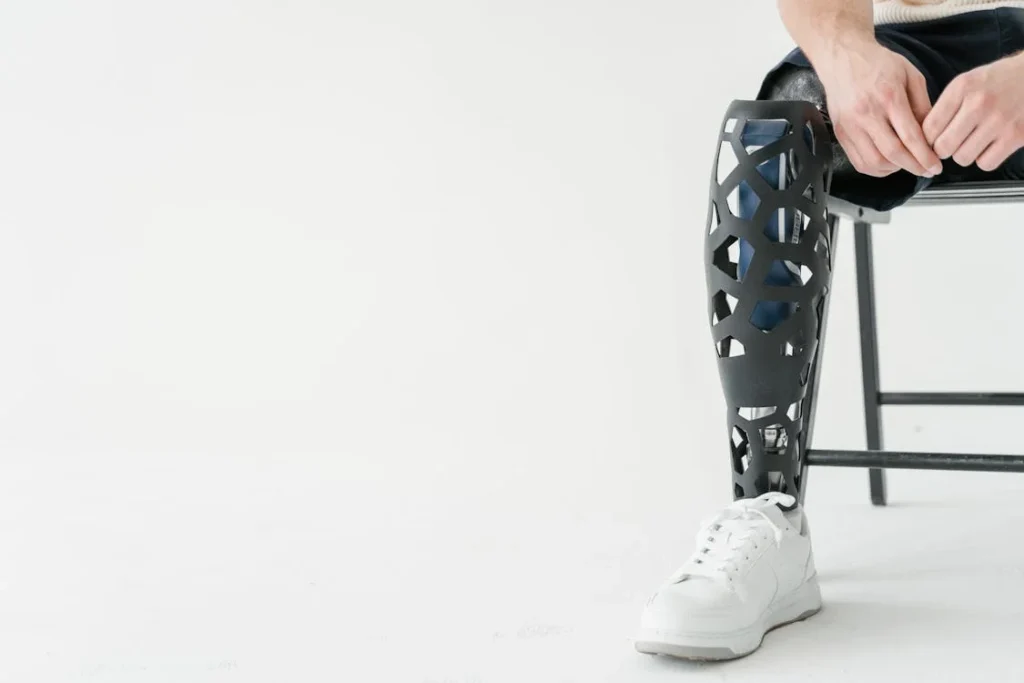
Why the Socket Matters More Than You Think
The True Connection Between Body and Device
The socket is often the most overlooked part of a prosthetic. It doesn’t move like a mechanical hand. It doesn’t flex like a foot. You don’t see motors, wires, or joints in it. But even though it seems simple, the socket is what makes everything else possible.
It’s the point where your body meets the artificial limb. Every step, every grip, every shift of your weight goes through the socket first.
If the socket doesn’t hold well, the rest of the prosthetic can’t do its job properly. Even the most advanced bionic limb will feel useless if it doesn’t feel secure where it matters most.
Think of it like a shoe. A high-performance shoe won’t help much if it doesn’t fit your foot. If it’s too loose, you trip. Too tight, and you get blisters.
But when the shoe fits just right, you don’t even think about it—you just move. That’s what a great socket should do. It should disappear into your day.
How Poor Socket Fit Impacts Daily Life
Many users don’t realize how much of their daily discomfort is tied to socket design. They may think their limb isn’t healing right, or that the prosthetic is too heavy. In reality, the pain or fatigue often comes from uneven pressure inside the socket.
A socket that’s too tight in one area and loose in another causes the skin to rub. Over time, this can create blisters, swelling, or even skin breakdown.
A socket that shifts when walking creates a feeling of instability. Some users describe it as walking on ice or sand—there’s no trust in the step.
This constant battle with discomfort affects more than just the body. It makes people avoid wearing their prosthetic for long periods. It leads to shorter steps, slower movement, and eventually, less activity altogether.
When that happens, the muscles begin to weaken, and the body starts to adapt in unhealthy ways. That’s how long-term damage begins—slowly and silently.
What’s worse is that people often blame themselves. They assume they’re not adjusting well or that something is wrong with their body. But most of the time, it’s not the person—it’s the socket.
What Makes a Socket “Custom”
There’s a big difference between a socket that’s made to a standard size and one that’s truly custom. A custom socket is built around the exact shape of your limb.
It doesn’t just match your length or width—it follows your curves, your bones, your sensitive spots, and your muscle structure.
Getting that level of detail means more than just taking measurements. It involves scanning, molding, and most importantly, listening to the person who will wear it.
A skilled prosthetist will not only examine the limb closely but also ask about your routine. How much do you move? What kinds of clothes do you wear? Do you walk on hard floors, rough roads, or soft grass? These things matter when designing a socket that truly works for you.
In some cases, a temporary socket is used during the early healing phase. As the limb settles and changes shape, a more permanent custom socket is then created.
But even after that, regular adjustments are often needed. A good custom socket is never a one-time fix—it evolves with your body.
Materials and Design Matter Too
The feel of a socket doesn’t just depend on shape—it also depends on the materials used. Some materials breathe better.
Others offer more flexibility or a softer inner layer. Some are better suited for warmer climates, while others are built to handle heavy physical activity.
The design also matters. Some sockets are open in certain areas to allow for better skin contact and airflow.
Others use liners and suspension systems to stay in place without causing friction. The right choice depends on your lifestyle, your limb condition, and how long you plan to wear the prosthetic each day.
A truly custom socket blends shape, material, and design together into something that feels like a natural part of your body—not a foreign object attached to it.
The Goal: A Socket You Forget About
When a socket fits just right, something amazing happens—you stop noticing it. It becomes part of you. You stand without shifting. You walk without wincing. You reach for something without bracing yourself.
This kind of comfort doesn’t just help your physical health. It restores confidence. It gives you the freedom to plan your day without wondering how long you can wear your prosthetic before it starts to hurt.
It makes life feel less about limits and more about possibilities.
This is the real goal of custom socket design—not perfection, but peace. When the fit is right, you stop thinking about your prosthetic and start thinking about your life again.
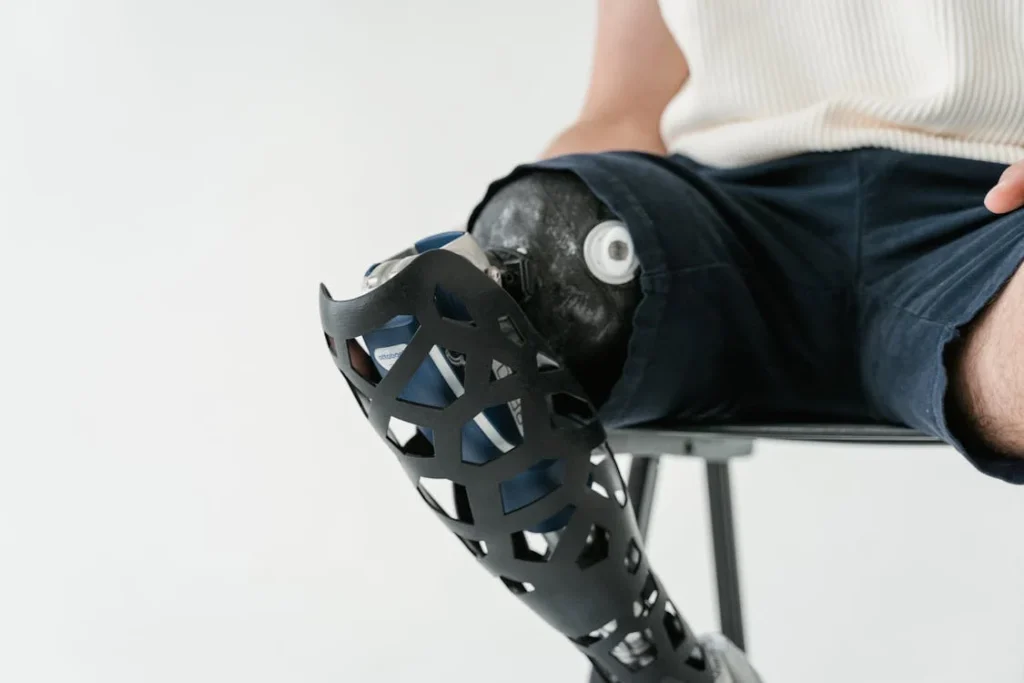
The Process Behind a Truly Custom Socket
It Begins With Understanding Your Body
Before anything is built, the most important step in custom socket design is understanding you. Not just your limb, but how you live your life. Every body is different, and so is every routine.
Some people walk long distances every day. Others may spend more time sitting, lifting, or even riding bikes. Some want to return to work. Others just want to move around their home more easily. These details shape the entire socket-making process.
A prosthetist will often begin by examining your residual limb. They’ll look for sensitive areas, bony spots, or changes in skin texture.
They’ll also ask how you’re healing and what your current challenges are. Your answers help create a picture of what your socket needs to do—not just structurally, but practically.
This part of the process is not rushed. It’s not about filling out a form or ticking a few boxes. It’s about conversation. Listening. Observing. The best custom sockets begin with empathy.
How Molding and Scanning Create the Perfect Shape
Once your limb is assessed, the next step is to create an exact replica of it. This can be done in a few different ways.
Some clinics still use plaster casting, where a soft mold is shaped around your limb and then used to form a model. Others use 3D scanning, which quickly captures the precise surface of your limb using digital tools.
Either method can work, as long as the process is done carefully. What matters most is how that mold or scan is used. It’s not just about capturing the shape of your limb. It’s about knowing where to relieve pressure, where to add support, and how to create balance.
A good socket design will avoid putting pressure on bony points while holding snugly around areas with soft tissue. It will account for how your limb might shrink slightly during the day or how it swells with activity.
It will adjust for your posture and how you carry your weight. These small details can’t be guessed—they must be built from real knowledge and experience.
Fitting Is Not a One-Time Event
Once a socket is shaped and built, it’s not considered final until you’ve worn it, moved in it, and shared how it feels. This is one of the most important parts of the process: the fitting stage.
The first time you wear your new socket, your care team will watch how you move. They’ll look for changes in your gait, your balance, and even your expres
sion. If you’re wincing or adjusting constantly, something isn’t right. If you move with ease and your shoulders relax, that’s a good sign.
You’ll be asked questions. Does it feel tight anywhere? Do you feel secure when standing? Can you bend comfortably? The answers guide small changes that can lead to big improvements.
Sometimes, the socket is worn for a few days and then brought back for refinements. This stage is normal. It’s not a sign of failure—it’s a sign that your care team wants it to be exactly right.
Long-Term Wear Means Long-Term Support
Even after the socket feels perfect, your body will continue to change. You may become more active. Your limb might slim down as muscles develop. You might lose or gain weight. These changes affect how the socket fits—and that’s okay.
What matters is having a system in place to make small updates over time. Sometimes this means adding a new liner. Other times, it means making a new socket altogether.
A strong relationship with your prosthetist means you won’t feel stuck when your socket starts to feel different. You’ll have someone to turn to who already understands your needs.
This is why good socket design is never a one-time job. It’s a process that evolves with your life.
The Role of Comfort in Mental Wellness
A socket that fits well doesn’t just ease your body—it eases your mind. When you’re not in pain, your stress goes down.
When you’re not worried about how long you can wear your prosthetic, you start making plans again. That mental shift is powerful. It brings back joy, confidence, and peace.
For many prosthetic users, emotional recovery is just as important as physical recovery. A bad socket can hold you back—not just physically, but emotionally.
It can lead to frustration, sadness, and even fear of using the prosthetic. But when your socket works with you instead of against you, that burden begins to lift.
You stop bracing for discomfort. You stop thinking about every step. You simply live.
This is what custom socket design is really about. It’s not just about fit. It’s about freedom.
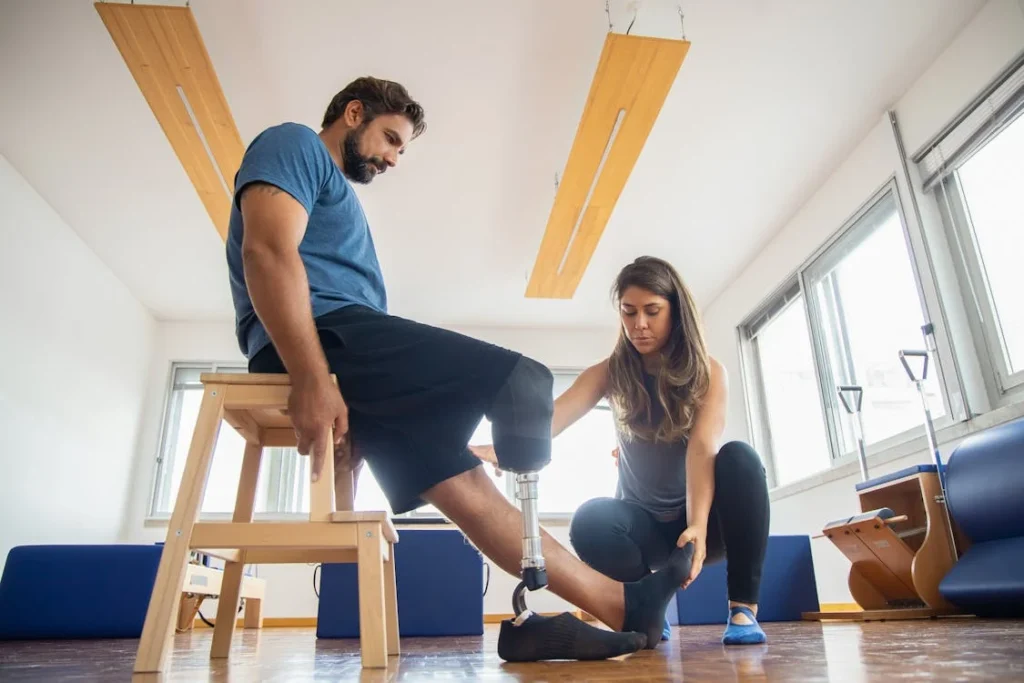
Everyday Signs That Your Socket Might Need Attention
Subtle Discomfort Shouldn’t Be Ignored
One of the biggest challenges prosthetic users face is knowing when discomfort is normal and when it’s a sign that something needs to change.
The truth is, subtle discomfort—especially when it becomes part of your daily life—can be your body’s quiet way of asking for help.
If you find yourself adjusting your socket throughout the day, shifting your weight often, or sitting down just to “take a break” from wearing it, these are not small things.
They’re signs that your socket may not be doing its job properly. A well-fitting socket should allow you to move, sit, stand, and walk without needing to stop and think about it all the time.
Even mild skin redness, tightness, or pressure at the end of the day can signal early issues. These sensations may be easy to ignore at first, but over weeks or months, they can lead to long-term problems like bruising, tissue breakdown, or even infections.
What matters is being honest with yourself about how the socket feels—not just in the morning when you first put it on, but several hours later, too. Discomfort that builds up slowly is just as serious as pain that hits suddenly.
Balance and Posture Changes Are Important Clues
When your socket doesn’t fit right, your body tries to make up for it in small ways. You might lean slightly to one side. Your stride might become shorter.
You may turn your foot outward when you walk without even noticing. These little changes in movement are often your body’s way of reducing pressure or avoiding pain.
But over time, they lead to poor posture, muscle fatigue, and joint stress. You might feel sore in places that aren’t even near your limb—like your lower back, shoulders, or neck. That soreness isn’t random. It’s your body working overtime to keep you steady.
A well-designed, custom socket can reduce the need for these compensations. It holds your limb in the right position and supports even, balanced movement. It helps restore your natural posture so your body can move more freely and efficiently.
If you’ve started to notice changes in how you walk or stand—or if other parts of your body are feeling sore—don’t ignore those signs. They often trace back to the socket.
Wear Time Should Increase, Not Decrease
Another common clue that your socket isn’t working as it should is a drop in the number of hours you wear your prosthetic. Many users start off feeling excited and hopeful.
They wear their prosthetic most of the day, eager to regain mobility. But slowly, as discomfort builds, they begin wearing it less and less.
Maybe it stays off during short walks. Maybe you avoid wearing it when you go out. Maybe it only goes on for essential tasks like cooking or cleaning. This gradual withdrawal isn’t laziness—it’s usually pain avoidance.
A comfortable socket should help you increase your wear time, not reduce it. You should feel like you want to wear your prosthetic because it makes your day easier.
When that stops being true, it’s a clear signal to check in with your care provider and discuss the socket’s fit.
Changes in wear time may seem small, but they’re powerful indicators of how your socket is affecting your daily life.
Your Socket Should Support, Not Limit You
If your socket is limiting what you can do—whether physically or emotionally—it’s not doing its job. Some users begin avoiding stairs, long walks, or even social events because they don’t feel confident in their prosthetic.
They’re worried about slipping, getting tired, or needing to stop and sit down.
This kind of hesitation can have a huge impact on mental well-being. It turns every outing into a calculation: Will I be okay walking this far? Will my socket start to hurt after an hour? Should I even go? That kind of thinking creates stress. And over time, it leads to isolation and frustration.
A good custom socket should do the opposite. It should make life easier, not more complicated. You should feel like your prosthetic is supporting your choices, not controlling them. When the fit is right, you feel freer—not more cautious.
If your socket has become a source of limitation rather than liberation, that’s a message worth listening to.
Open Communication Leads to Better Fit
Your care team can only help if they know what’s going on. That’s why one of the most powerful tools you have is communication.
Talk openly and honestly about how the socket feels, even if the discomfort seems small. Share what’s working and what isn’t. Your input is the most accurate feedback your team has.
You don’t need to use technical language. You just need to describe what you’re experiencing—where it hurts, when it starts, what movements make it worse. The more you share, the better the adjustments can be.
A great prosthetic provider will listen without judgment. They’ll treat your concerns seriously and work with you step by step. Together, you can reach a fit that works not just for your limb, but for your whole life.
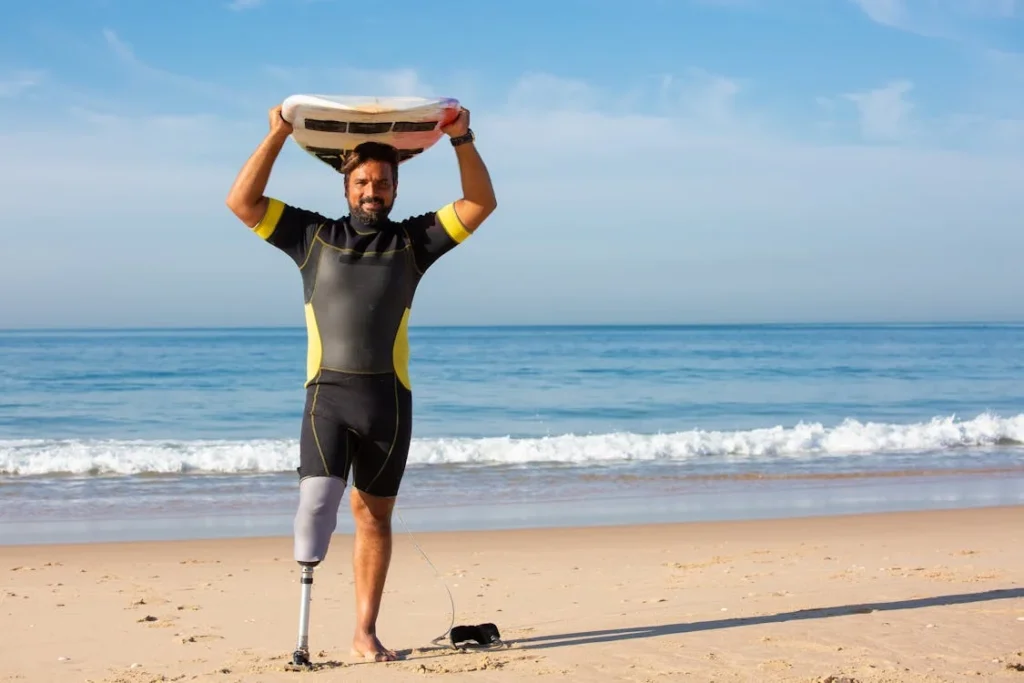
How Your Environment and Daily Life Shape Socket Performance
Climate and Skin Comfort
The climate you live in plays a big role in how your socket feels throughout the day. Hot and humid conditions, for example, can lead to excessive sweating, which makes the limb slippery inside the socket.
This can cause shifting, friction, and eventually, skin irritation. Sweat can also make liners less effective, and over time, this adds up to discomfort and even infections if the skin isn’t cared for properly.
In colder areas, the opposite happens. The skin and muscles may tighten slightly, reducing flexibility and causing the socket to feel more rigid or unforgiving. The fit might feel tighter in the morning and loosen up as the body warms with movement.
These changes aren’t flaws in the body—they’re natural responses. But they do mean that socket design should take climate into account.
Materials, ventilation, and lining choices can all be adapted to suit your environment. A socket that works well in a controlled clinic may not feel the same when worn outdoors all day in a hot city.
That’s why socket comfort shouldn’t be judged on the first fit alone. It should be tested in the places you actually live and move.
Work Routines and Physical Demands
Your job—or the kind of daily work you do—can shape how your socket needs to perform. Someone who spends hours standing in a shop or walking on uneven roads needs a socket that offers consistent support across long wear times.
Someone who lifts objects or moves between sitting and standing throughout the day needs flexibility and even pressure distribution.
There’s also the question of movement type. Is your motion repetitive? Do you bend, twist, crouch, or lean often? Each of these actions applies different forces to the socket.
If the design isn’t built to handle your routine, the result is wear and tear on both the prosthetic and your body.
This is why the best socket designs begin with a conversation about what you actually do. Fit isn’t just about how the socket wraps around your limb—it’s also about how it holds up in the real world.
When your socket is shaped around your job, your hobbies, and your daily rhythm, it does more than support you. It becomes something you can trust to move with you, not against you.
Cultural Norms and Body Movement
In many parts of the world, especially in places like India, daily life involves specific physical routines—sitting cross-legged, squatting, or even walking barefoot indoors.
These movements are culturally normal but physically demanding when using a poorly fitted prosthetic.
Traditional socket designs, especially those built on western movement patterns, may not support these positions comfortably.
If you need to sit on the floor, your socket must allow a wide enough range of motion in the hip and knee. If you work in a setting where shoes are removed often, the alignment and balance of the socket becomes more sensitive.
Understanding and respecting these cultural habits during the design process allows for a prosthetic that doesn’t just work—it feels natural and respectful of how you live your life.
Ignoring these factors can lead to a prosthetic that’s technically functional but practically frustrating.
Socket comfort isn’t just about ergonomics—it’s about whether you can be yourself while wearing it.
Social Confidence and Visibility
How visible your prosthetic is, and how it fits under clothing, also matters more than most people realize. A bulky or poorly contoured socket may cause your clothes to fit awkwardly.
Some users find themselves avoiding certain outfits or feeling self-conscious in social situations. Over time, this can reduce confidence and limit participation in public life.
A custom socket should blend with your style—not stand in the way of it. That might mean refining the shape to allow slimmer trousers or adding features that reduce visible lines under traditional wear. The design should be subtle, not distracting.
When a prosthetic feels comfortable and looks natural, it helps reduce the mental burden of wearing it. You stop worrying about how you appear, and focus instead on being present in the moment.
A well-designed socket not only supports your body—it supports your identity.
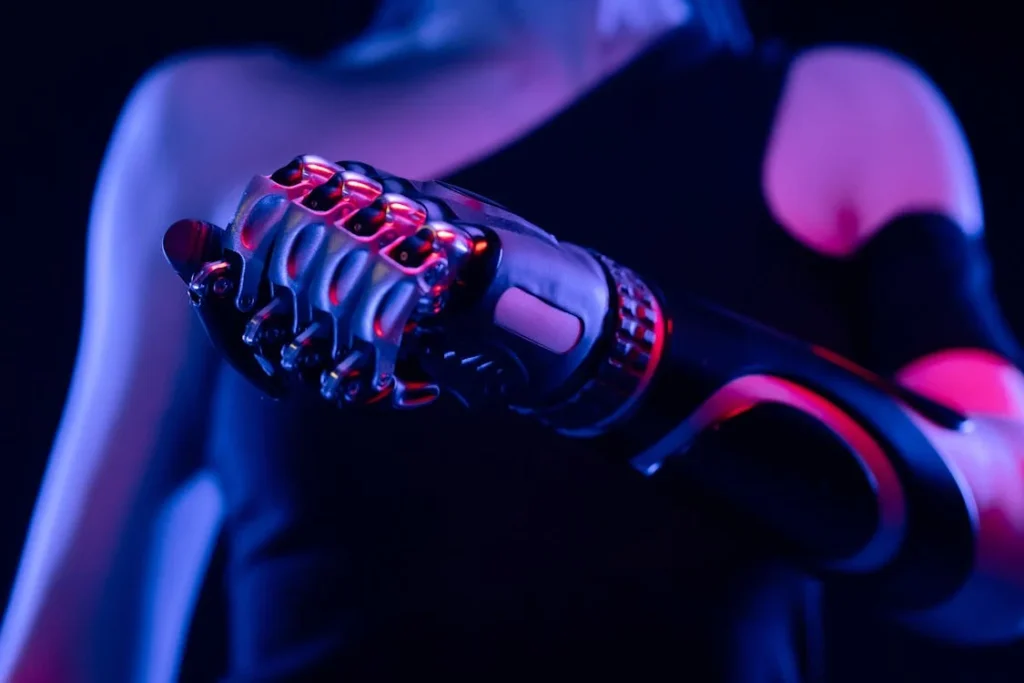
How Socket Design Influences Adaptability and Long-Term Progress
Learning to Move Again Takes Time—and the Right Tools
Adapting to a prosthetic is not a single moment. It’s a journey. It involves your body, your brain, your habits, and your confidence. Early in that journey, the focus is often on comfort and basic mobility.
But as time passes, many users want more. They want to move faster, stay active longer, or even try things they hadn’t imagined possible before.
The socket plays a quiet but critical role in making this progress feel smooth rather than frustrating. If the fit is off, even slightly, your body spends more time correcting itself than learning new patterns.
That slows everything down. It also makes advanced movement—like climbing stairs without rails or carrying weight while walking—feel unnecessarily hard.
A properly designed socket supports not just basic use, but skill-building. It gives you a stable base that you can trust.
That stability allows your muscles to engage correctly, your balance to improve, and your movements to become smoother and more natural with time.
It’s easy to overlook this during early fittings when the focus is on “making it wearable.” But if the goal is long-term progress, the socket must be designed to support learning and growth, not just comfort on day one.
The Brain Learns Through Feedback—and the Socket Shapes That Feedback
Every time you take a step or grip an object, your brain reads signals from your body. These signals include things like pressure, balance, force, and even texture.
Over time, your brain builds a map of how to move with the prosthetic.
But here’s the key: that feedback comes through the socket. If the socket doesn’t sit right or if it shifts during motion, the brain gets mixed signals.
This creates confusion. You might hesitate during a step or use more force than necessary to hold something. These habits become part of how you move.
Now imagine a socket that fits snugly and consistently. Your brain learns to expect the same signals every time. That consistency builds confidence.
The brain starts to trust the prosthetic. Movements become less about guessing and more about knowing. That’s how real progress is made.
The quality of socket fit can either accelerate your progress or quietly hold you back. It’s not just about avoiding pain—it’s about creating a clear path for your body and brain to work together.
The Right Socket Makes Everyday Practice Feel Easier
Rehab and training exercises are key to regaining strength, balance, and skill after limb loss. But those exercises only work well when the prosthetic fits well.
If the socket is uncomfortable or awkward, practice becomes frustrating. You stop focusing on the movement and start focusing on the pain.
This not only slows down your progress but can also affect your motivation. You might avoid training altogether or limit your effort during sessions.
That pause, even if it feels small, can delay the brain’s ability to adapt to the prosthetic and reduce your long-term outcomes.
When the socket feels like a part of you—supportive, secure, and responsive—rehab becomes less of a task and more of a tool. You stay focused. You feel more in control. Each repetition builds real, lasting progress.
A good socket doesn’t just make you feel better in the moment—it makes you want to keep going.
Supporting Growth Beyond the Basics
Most prosthetic users don’t stop at basic movement. They aim higher. Some want to return to sports. Others want to work jobs that involve physical tasks. Some want to explore travel, parenting, or simply more independence at home.
Socket design plays a quiet but powerful role in reaching those goals. A socket that was “good enough” at first might not hold up during more advanced activity. It might start to feel unstable under pressure or cause fatigue during longer wear.
That’s why sockets need to evolve with you. As your strength, movement, and confidence grow, your socket should be ready to grow with you—whether that means a redesign, a material change, or an entirely new approach.
A forward-thinking design doesn’t just meet today’s needs. It anticipates tomorrow’s potential.
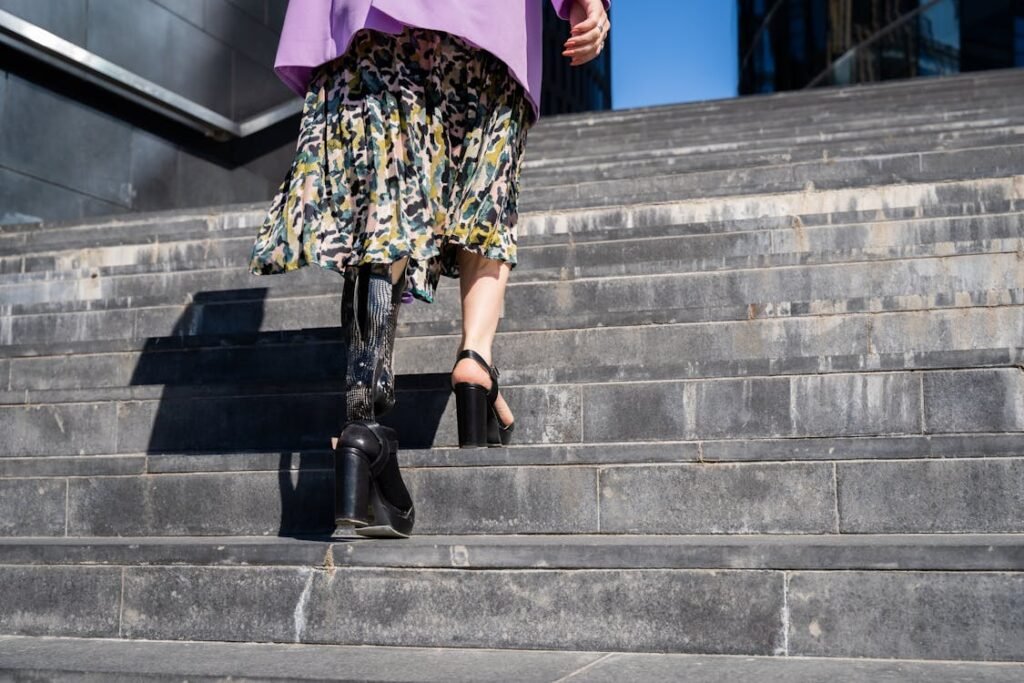
The Emotional Impact of Feeling Secure in Your Socket
Stability Builds Confidence
When someone wears a prosthetic, they’re not just looking for support—they’re looking for trust. That trust begins with feeling safe. And nothing affects that feeling more than the socket.
The moment a socket feels like it might slip, shift, or loosen during movement, something changes inside the wearer. The body stiffens. Steps become shorter. The mind starts bracing for a possible mistake.
This quiet mental tension builds over time. Even if there’s no fall or injury, the fear of something going wrong can be just as limiting. People begin to move less, or only in controlled environments.
They avoid busy places, stairs, or even uneven sidewalks. The prosthetic no longer feels like a tool for freedom—it feels like something they have to monitor constantly.
But when the socket holds firmly, responds with the body, and stays in place no matter the movement, that sense of danger fades.
Confidence takes its place. The user starts to walk faster, stand taller, and move without double-checking every step.
Security in your socket isn’t just physical. It affects how you feel inside your body—and how you interact with the world around you.
Freedom From Self-Consciousness
Many prosthetic users describe a shared feeling: the awareness of being watched. Whether it’s curiosity, sympathy, or misunderstanding, they feel the eyes of others on them.
That sense of being observed can make people hyper-aware of their movements, their posture, even how smoothly they walk.
Now imagine that same feeling while also worrying about your socket. What if it shifts while you’re walking into a room? What if it makes a sound when you sit down? What if it causes you to limp or adjust your clothing constantly?
These thoughts weigh heavily. They can make a person avoid social outings, turn down opportunities, or simply choose to stay home.
A well-designed socket changes that. When you know your socket will stay where it’s supposed to, when it supports natural movement and blends into your routine, you forget about it.
And when you forget about it, others do too. You move without drawing attention—not because you’re hiding, but because everything looks and feels natural.
That shift brings a deep kind of relief. It returns your sense of privacy. It lets you engage in conversations, gatherings, or daily errands without wondering who’s noticing your prosthetic.
It restores a sense of being in control—not just physically, but socially.
The Quiet Stress of Uncertainty
Living with an ill-fitting socket doesn’t always mean pain. Sometimes, the most damaging effect is the uncertainty. Will it hold up today? Will I have to cut my trip short? Should I carry backup supplies, just in case?
This constant low-level stress is easy to overlook, but it’s exhausting. It’s like background noise in your mind that never quite goes away. It keeps you from being fully present. It eats up energy that could be used for more joyful, productive, or creative things.
Users who finally switch to a well-fitted socket often talk about more than physical relief. They talk about mental quiet. The removal of doubt. The feeling that their body is working with them again, not against them.
Socket design, when done well, offers more than comfort—it offers peace of mind. And that peace of mind has ripple effects in every part of life, from relationships to work to simple, everyday happiness.
Reclaiming Your Space and Identity
For many people, limb loss brings not just physical change, but a shift in identity. The body feels unfamiliar. The mirror reflects something different. Confidence wavers, even in familiar spaces like home or work.
The prosthetic plays a major role in rebuilding that identity—and the socket is its foundation. When the socket is poorly designed, the prosthetic feels like a foreign object. When it’s well-designed, it feels like part of you.
This sense of ownership is powerful. It allows people to reclaim parts of their life that were pushed aside during recovery.
Whether it’s walking confidently into a classroom, cooking dinner without stress, or just sitting comfortably on the floor with family, these moments matter. They aren’t about perfection—they’re about participation.
Socket design, at its best, doesn’t just help you move. It helps you return to yourself.
The Future of Prosthetic Comfort Starts With the Socket
Moving Forward With Purpose
Every person who wears a prosthetic deserves more than just function. They deserve ease. They deserve comfort. And they deserve the freedom to move through life without second-guessing their steps, their balance, or their body.
As technology in prosthetics continues to grow, it’s easy to focus on robotic features, smart sensors, and advanced materials. But none of those things matter if the socket—the one part that actually touches your body—doesn’t fit well.
The socket is the part that carries your day, your effort, and your hope. When it fits right, the whole system works better.
The future of prosthetic care will not just be about smarter hands or faster legs. It will be about more thoughtful, personalized, responsive socket design. The kind that supports not just your body, but your lifestyle, your habits, your climate, and your goals.
The socket is where the relationship between you and your prosthetic begins. And when that relationship is built with care, it gives you more than comfort—it gives you the confidence to keep going, to grow stronger, and to live the life you choose.
Conclusion
Custom socket design isn’t just about shaping plastic to fit a limb. It’s about shaping possibility. When done well, a socket disappears into your life, leaving space for comfort, stability, and progress to take center stage. It keeps your prosthetic secure, your body balanced, and your mind focused on living—not adjusting, bracing, or enduring.
If you’ve ever felt discomfort, hesitated before putting your prosthetic on, or wondered if things could feel better—they can. It starts with listening to your body. It continues with finding care that sees fitment as a partnership, not a product. And it ends with a socket that supports you in every step, every movement, every moment.
Because when the socket fits, everything else fits better, too.



